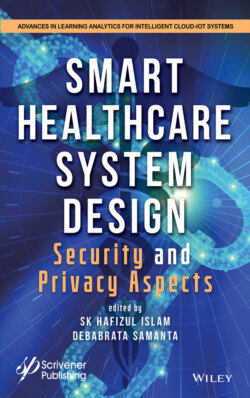Читать книгу Smart Healthcare System Design - Группа авторов - Страница 35
1.5.2 Discussion
ОглавлениеUsing the knowledge gained from the previous experiments, a balance of all the algorithms features and other parameters were combined in order to come up with a prediction model capable of detecting the EEG state in Table 1.5 is discussed. In its fundamental form, this last experiment is an emulation of what would happen in a real situation and designed with a realistic point of view to make sure that the feasibility of constructing such a device with this algorithm would be preserved. In addition, the seizure prediction was empirically defined as seconds to safely provide enough preictal data for all of the seizure cases. This seizure prediction horizon was dynamically defined as each of the training sets were constructed for each case that was real time data tested. For each testing case, the training data consisted of all other seizure cases from the same patient.
All of the algorithm feature sets results described in Table 1.6 is extracted from the signals as the testing sample. Since there are feature sets that compare each of the channels to each other, the emulator is supplied data segments from all of the channels at once for each 3-second segment. The performance analysis of Hybrid Artificial Neural Network with Support Vector Machine (HANNSVM) is compared with the existent methods. Such methods used for analysis are one-class SVM method [12], neural network [13]. The one-class SVM classifiers are then executed with the respective training and testing sets described, and their predictions are given to the decision fusion based module. The neural network algorithm reduction of a new permutation of the training data is done where the training data used is a combination of all the seizure cases from the same patient except for the case being used as testing. neural network algorithm is also applied to the testing sample using the same parameters so that the testing data is properly scaled with the training data. The parameters used for performance analysis are classification accuracy and running time. Accuracy is measured where is perfectly identified count of true positive records and is the absolute count of positive records for infected person category. The combination average value of NIMH patients’ data and MIT-CHB patient data average values are shown in Table 1.6 and Figure 1.10. The performance analysis in Table 1.6 exhibits the enhanced accuracy based on patient EEG features of Hybrid Artificial Neural Network with Support Vector Machine (HANNSVM) over other existent methods. The pictorial representation of performance analysis is shown in Figure 1.10.
Table 1.6 Feature sets that resulted in the highest prediction accuracy for patient dataset.
The combination average value of NIMH type of epilepsy data and MIT-CHB type of epilepsy data average and calculate the total averages. The performance analysis in Table 1.7 exhibits the type of epilepsy based accuracy values of Hybrid Artificial Neural Network with Support Vector Machine (HANNSVM) over other existent methods. The pictorial representation of performance analysis is shown in Figure 1.11.
The research has been tested perfectly and successful results are achieved. These results are successfully uploaded to the cloud using Raspberry Pi. Protocols like SPI have been understood and verified its functionality with practical implementation. The research justifies the terms “Embedded System” and “Internet of Things” as it is integrated the hardware and software serving for dedicated application via internet as a medium for data transmission and storing the information. After verifying the results, it is proved that designed research can be used for real-time environment without any error absolutely. The usage of internet of things technology helped the research to access the web portal globally. Such that by seeing the results respective step is taken to prevent before the health condition of patient is going even worse. The system is able to provide the solutions for the problems faced in real time and perfect achievement is succeeded.
Figure 1.10 Output result accuracy predictions for based on patient EEG data.
Table 1.7 Feature sets that resulted in the highest prediction accuracy for each type of epilepsy.
Figure 1.11 Accuracy predictions for based on type of epilepsy.
